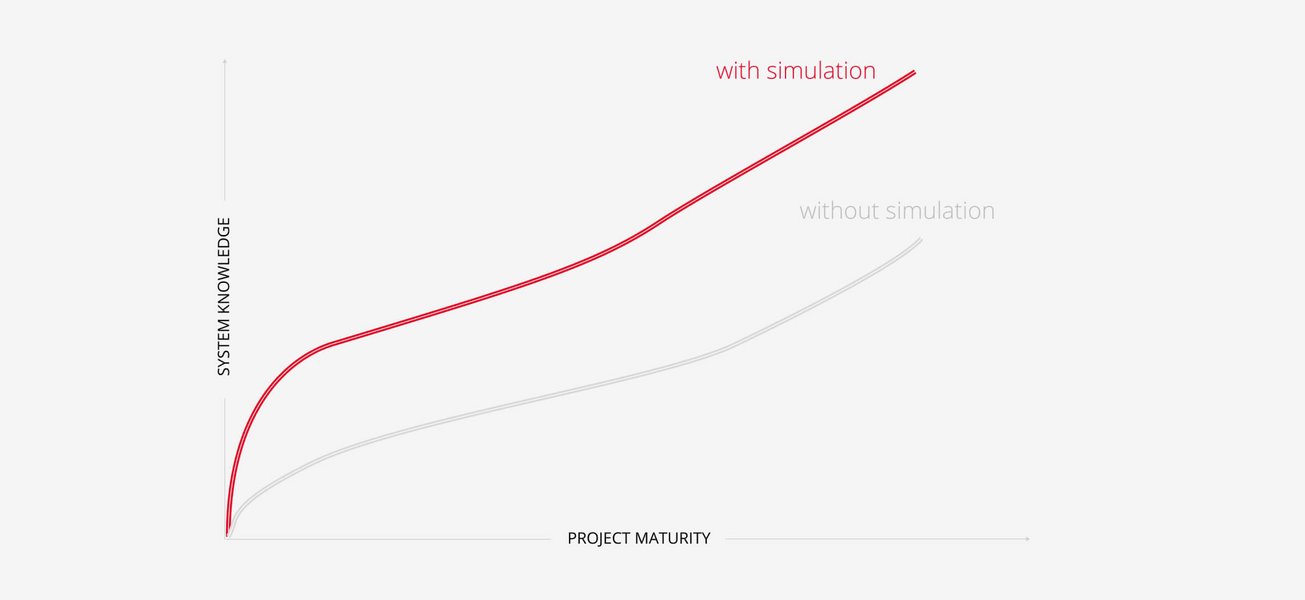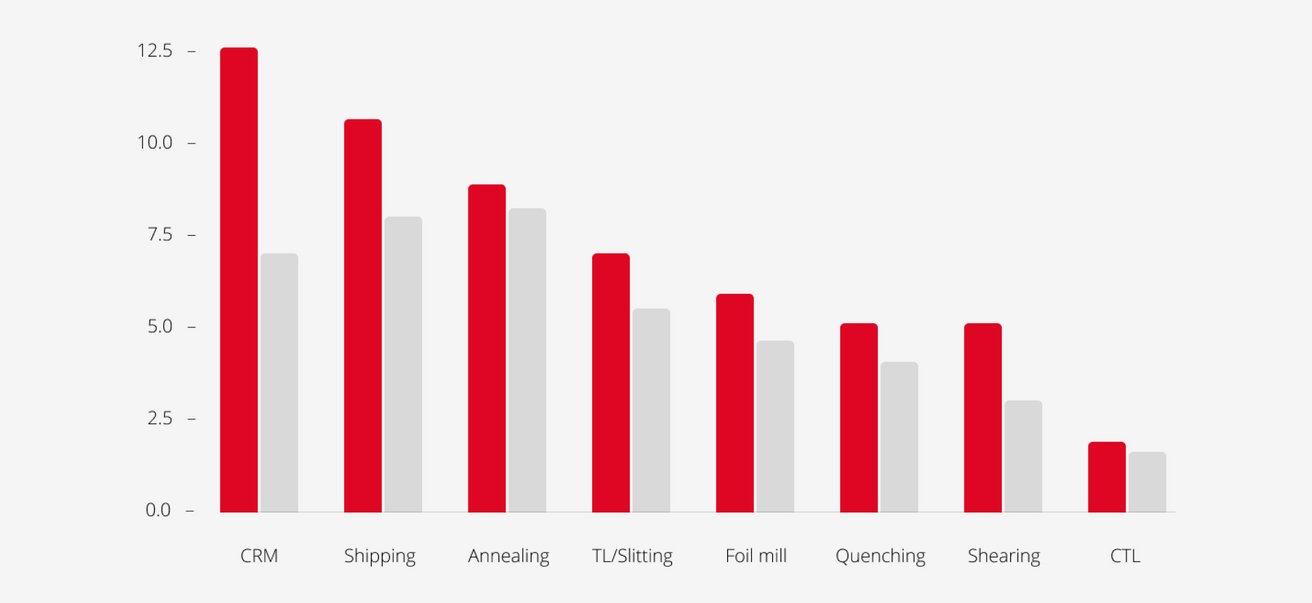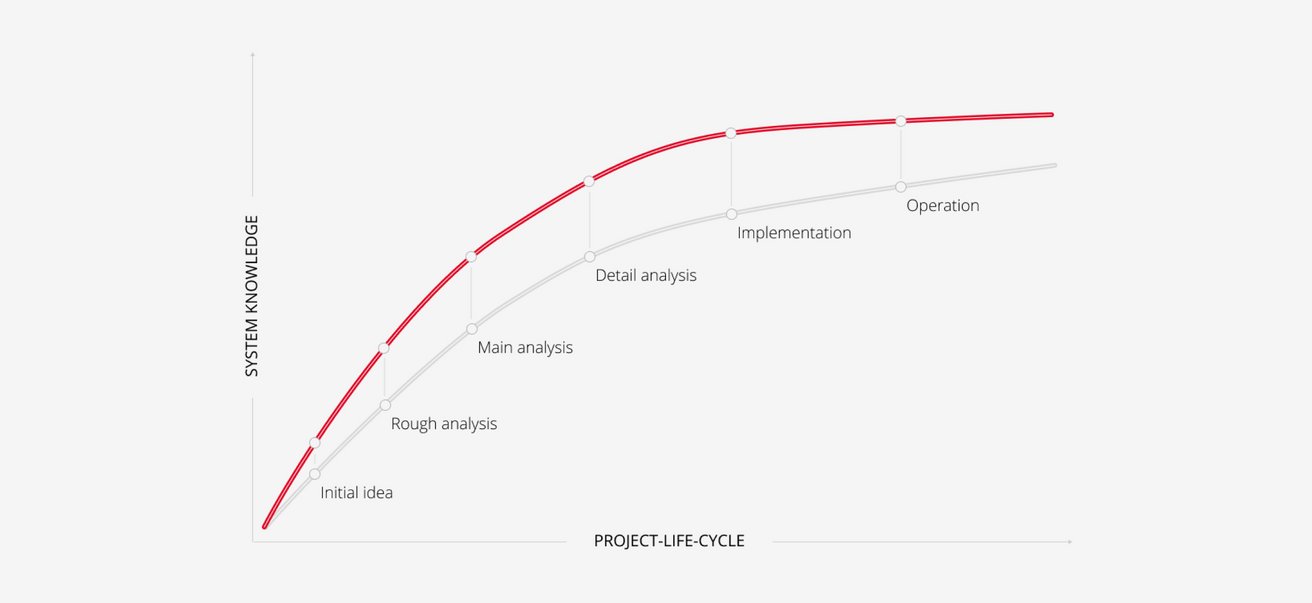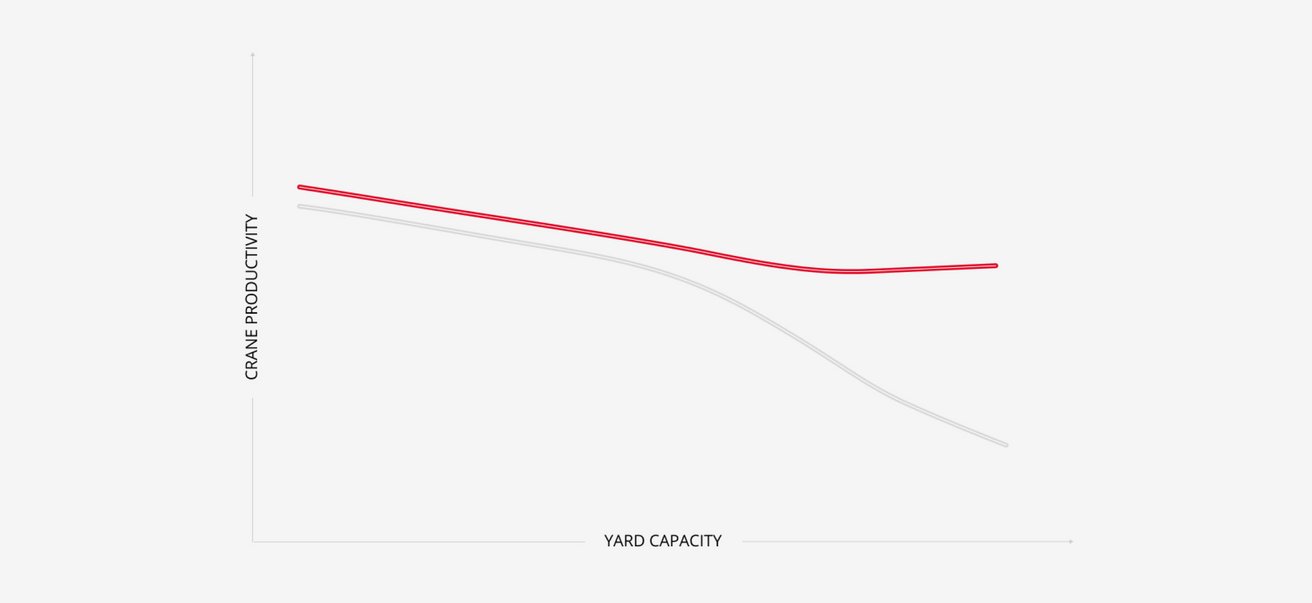We develop discrete-event simulation models of facility concepts as well as plant and terminal designs, aiding system configuration and enhancing project transparency. For example, the simulation modelling technique allows for thorough analysis of comprehensive material flow scenarios and dynamic system interactions.
SYSTEM VERIFICATION – Contrary to standard throughput estimation methodology, using static calculations, discrete-event simulation captures complex and dynamic system interactions that otherwise would have been neglected by static calculations.
DESIGN OPTIMIZATION – A simulation model comprises the layout as well as relevant equipment. Adjustments can be made to e.g. equipment configuration, design or layout and the impact on relevant performance indicators can be evaluated.
SIMULATION MODELLING ENABLES A STEEPER LEARNING CURVE

TYPES OF SIMULATION STUDIES
Feasibility studies aim at proofing the functionality of a system. Their focus is on providing decision support related to the rough-cut design, concept and layout.
Throughput verification studies can, for example, verify the maximum possible throughput rates at various entry and exit points in a high-bay storage system, subject to defined material flow ratios and specified warehouse management logics.
Emulation studies belong to a type of simulation related studies in which a simulation model is developed and connected to e. g. existing ERP solutions, managing real operations in live systems. Emulation studies seek to provide transparency of ongoing operations and procedures, thereby allowing operators and facility owners to understand their systems.
Impressions – Simulation-based optimization of storage zones

Simulation studies dealing with the optimization of warehouse management algorithms have their primary focus on implementing and testing different warehouse management algorithms to see which algorithms performs the best. An example for this could be the scheduling of storage good to high-bay storage aisles and high-bay storage locations. A simulation model provides a canvas for different versions of algorithms, allowing for investigation and analysis of their impact on relevant metrics. Since a simulation model in these cases will comprise all equipment relevant to the plant or facility, interactions of the warehouse management algorithms with all other elements of the overall system are considered in such an investigation.
Impression – Simulation of logistics hubs

Digital twin simulation projects focus on developing simulation models that interact with the actual PLCs controls to be deployed or already in use in operations. Actual PLC controllers receive signals from the simulation model while the PLC then returns relevant attribute values. For example, the simulation model will trigger a sensor when a pallet is registered. The PLC returns the current drive speed of the engine. Below figure highlights a digital-twin example for a conveyor line with sensor communication sent by the model to a PLC and drive speed communication received from the PLC by the model.
Impression – Simulation of stacking processes
